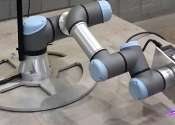CCC members show iris recognition bypass using photo, contact lens
(Tech Xplore)—Mobile vendors have turned to novel biometric ways to unlock smartphones. Now iris recognition joins the biometric family, with the concept being that the user looks and an iris scanner can unlock a phone.









